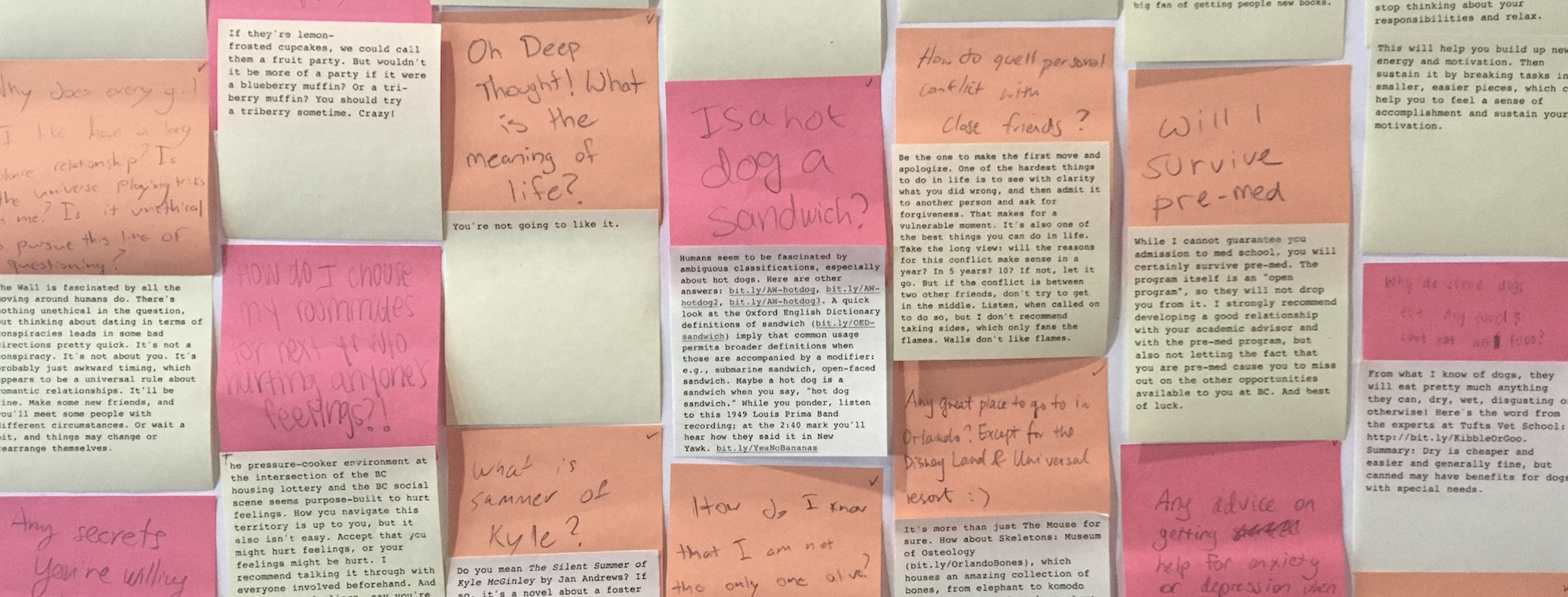This means, it, for example, travels to the Andromeda galaxy and back, faster than the speed of light. What am I missing?
I’m more of a Newtonian wall, myself, so I’ll have to check in with some folks who know quantum physics before I’m able to answer.
I’ve consulted with my more learned colleagues, and they had this to say: Though physicists themselves don’t agree exactly on what’s happening in the double-slit experiment (as Philip Ball makes clear in this book review (bit.ly/nature-2doors), science writer Marco Tavora explains that a key concept developed by Feynman is path integrals, a way of describing of probabilities of multiple paths (bit.ly/tavora-feynman). Some paths are highly probable, and others (like a roundtrip to Andromeda) are highly improbable. Anil Ananthaswamy has written a brief essay about the slit experiment’s challenges (bit.ly/ananthaswamy), and we also happen to have a book by him (reviewed in the article by Philip Ball) that goes into more depth, including including a lot of material about Feynman’s approaches: Through Two Doors at Once: The Elegant Experiment that Captures the Enigma of our Quantum Reality (O’Neill Library QC174.123 .A53 2018). Happy reading!
Thank you so much, although that the probability path (no idea how you call it) approach doesn’t exclude the electron traveling faster than the speed of light (really improbable doesn’t mean it will never happen) it makes things more elegant and charming. I would love to read that book, but maybe I’ll have to educate myself about quantum mechanics a bit more.
That book looks like it’s actually a pretty good starting point; it’s by a science journalist, not a physicist, so likely does a good job explaining concepts to the layperson. Always a great day when there’s more reading and learning to be done!

